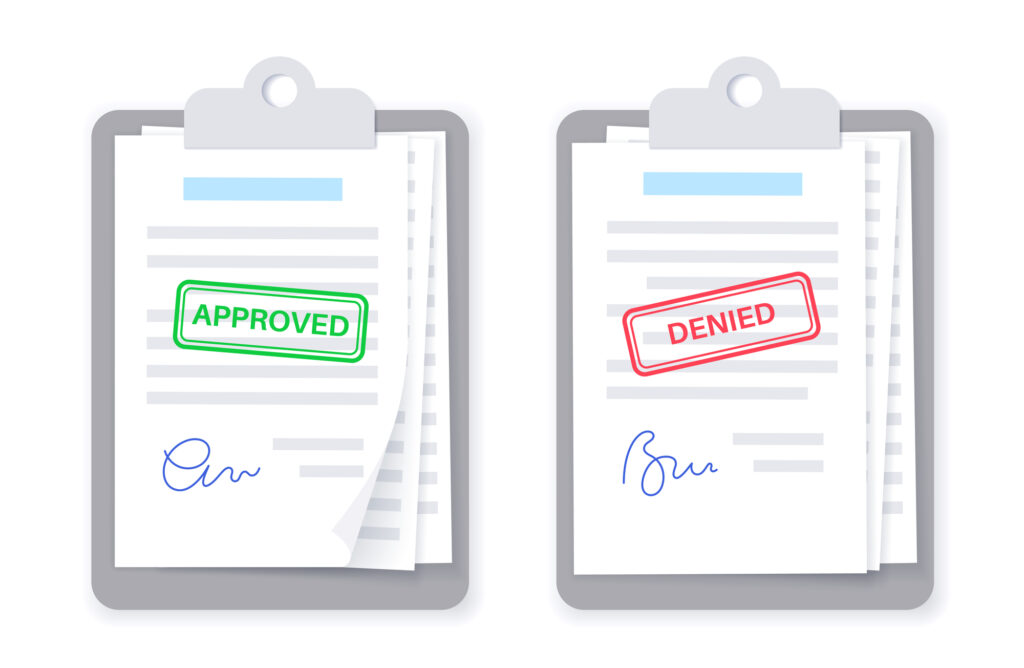 Obtaining funding often feels like a significant milestone for small business owners. But when loan applications hit a wall, reality sets in fast. Denial letters don’t offer much comfort, and time is rarely on your side. If your loan application has been rejected, the path forward may seem uncertain—but it isn’t the end of the road. There are still viable routes to get the capital your business needs. Let’s explore what to do next if your business loan didn’t get the green light.
Obtaining funding often feels like a significant milestone for small business owners. But when loan applications hit a wall, reality sets in fast. Denial letters don’t offer much comfort, and time is rarely on your side. If your loan application has been rejected, the path forward may seem uncertain—but it isn’t the end of the road. There are still viable routes to get the capital your business needs. Let’s explore what to do next if your business loan didn’t get the green light.
Understand Why Your Application Was Rejected
Lenders rarely reject applications at random. There’s usually a specific reason—and knowing that reason is your first step forward. Common causes include a low personal credit score, insufficient revenue, inconsistent cash flow, limited time in business, or a high debt-to-income ratio.
Most lenders will provide an adverse action notice explaining the denial. Read it carefully. If the notice is vague, reach out and ask for more details. Understanding what went wrong allows you to correct course rather than repeat the same mistake with another lender.
Revisit and Improve Your Financial Profile
Lenders are in the business of minimizing risk. The more stable and organized your finances appear, the better your odds. Start with your credit. If your personal or business credit score falls below 650, that could be a red flag. Pay down existing debt, avoid late payments, and limit new credit inquiries.
Next, look at your financial documents. Ensure your tax filings, profit and loss statements, and bank records are up to date and accurate. Lenders want to see clean books. If numbers are inconsistent or incomplete, it could raise doubts—even if your business is performing well.
Explore Alternative Lending Options
Traditional banks aren’t your only option. If your business loan application was denied, consider non-bank lenders, fintech platforms, or microlenders. These providers often work with startups and small businesses that don’t meet the strict criteria of conventional banks.
Online lenders may offer short-term loans, lines of credit, or invoice financing. Approval tends to be quicker, and the requirements are generally more flexible. That said, interest rates can run higher, so it’s essential to read the fine print before accepting any offer.
Community development financial institutions (CDFIs) and nonprofit lenders are another potential source. These mission-driven institutions are often more accommodating, especially for minority-owned businesses or those in underserved communities.
In certain instances, a personal loan can also serve as a workable funding option. While not created specifically for commercial use, personal loans can be applied toward business needs, especially for startups that haven’t established a strong financial history. Because qualification is based on personal credit rather than business performance, the process may be more accessible for newer entrepreneurs. That’s why many turn to personal funding in their early stages.
Comparing the key differences in a business loan vs personal loan—particularly in how lenders evaluate creditworthiness and define fund usage—can help you determine which route better suits your current needs. If your business is in its infancy or still building traction with lenders, a personal loan might offer a practical, short-term solution while you work toward larger financing goals.
Bootstrap or Seek Internal Capital
Sometimes, the most immediate funding source is the one you already control. Reinvesting profits, using personal savings, or liquidating unused assets might not be ideal, but these methods give you more control over your business.
If your business already has revenue, explore ways to free up working capital. Can you renegotiate vendor terms, reduce inventory costs, or delay non-essential purchases? Optimizing internal operations can sometimes provide a short-term boost without external borrowing.
Bring in a Partner or Investor
Equity financing may offer a longer-term solution—especially if your business has growth potential. Angel investors, friends and family, or venture capitalists could be interested in contributing funds in exchange for ownership.
Before offering equity, create a clear pitch deck and financial projections. Define the terms of any partnership carefully. While equity financing avoids debt, it also involves giving up a share of future profits and decision-making power.
Crowdfunding is another possibility. While not suited for every business, reward-based platforms work well for consumer products or community-driven ventures. Success depends heavily on storytelling and marketing, so effort matters just as much as the offer itself.
Try Again With a Stronger Application
Reapplying isn’t a bad decision—but only if your profile has improved. Address the issues that led to the initial rejection. If you were declined due to a lack of revenue, wait a few months to show growth. If the problem was credit, show evidence of positive changes.
Refine your business plan. Lenders want to know how you’ll use the money and how it will generate returns. Your plan should outline realistic projections, an understanding of the market, and a clear repayment strategy.
Consider applying with a different lender which would better suit your business stage. Match the loan type to your purpose—don’t seek a five-year term loan if a six-month working capital injection will do.
Consider Secured Loans or Co-Signers
If your profile remains borderline, offering collateral could help reduce perceived risk. Equipment, vehicles, or real estate assets may unlock approval for secured loans. Just make sure you understand the risks—if you default, you could lose those assets.
Another path is bringing in a co-signer with stronger financials. This could be a business partner or someone who believes in your venture. Their backing might improve your chances, but it also adds responsibility. If the loan goes unpaid, the co-signer shares the fallout.
Build Lender Relationships Early
The best time to build rapport with a lender is before you need funding. Open a business bank account, maintain a consistent deposit history, and communicate openly with your banker. If they know your business and see positive trends, they’re more likely to advocate for your loan when the time comes.
Having an existing relationship often helps with flexibility. Lenders may offer better terms or alternative products if they trust your track record. You’re not just a name on an application—you’re a business they know.
Turning Rejection Into a Strategic Pause
A loan rejection might feel like a setback, but it’s often a valuable pause point. It forces you to review operations, refine your goals, and strengthen your financial standing. That effort doesn’t just increase your odds next time—it can also help you run your business more efficiently.
Capital isn’t the only thing that drives success. Resourcefulness, persistence, and smart strategy carry just as much weight. Use the moment to reflect, retool, and move forward with confidence. The right funding will come, just not always on the first try.
Looking for more information concerning business loans? See this list of blogs.


